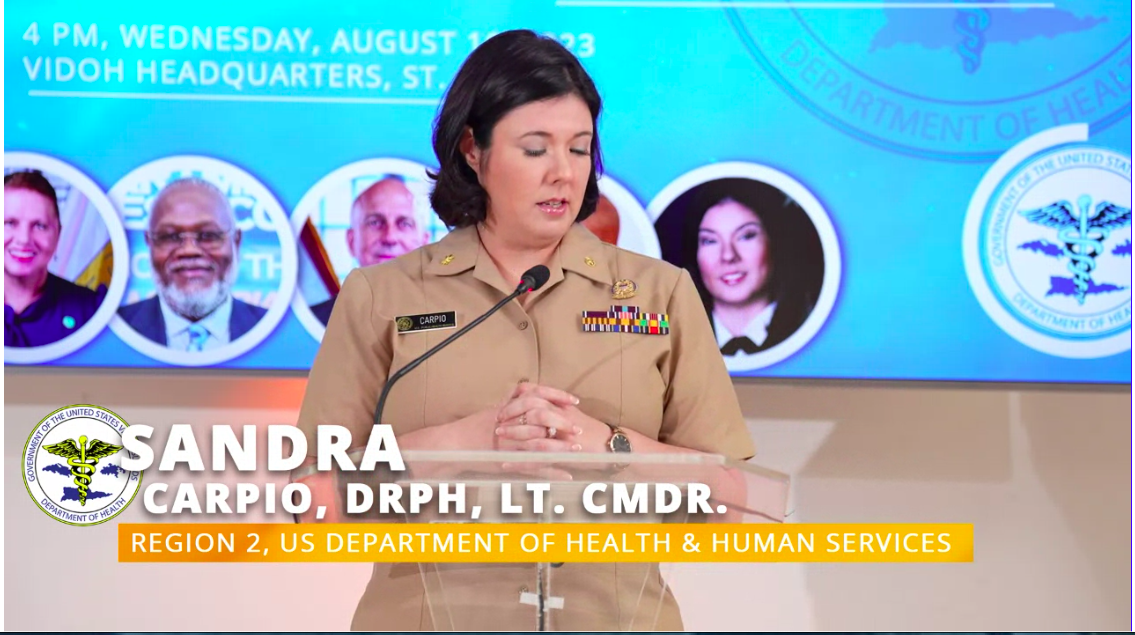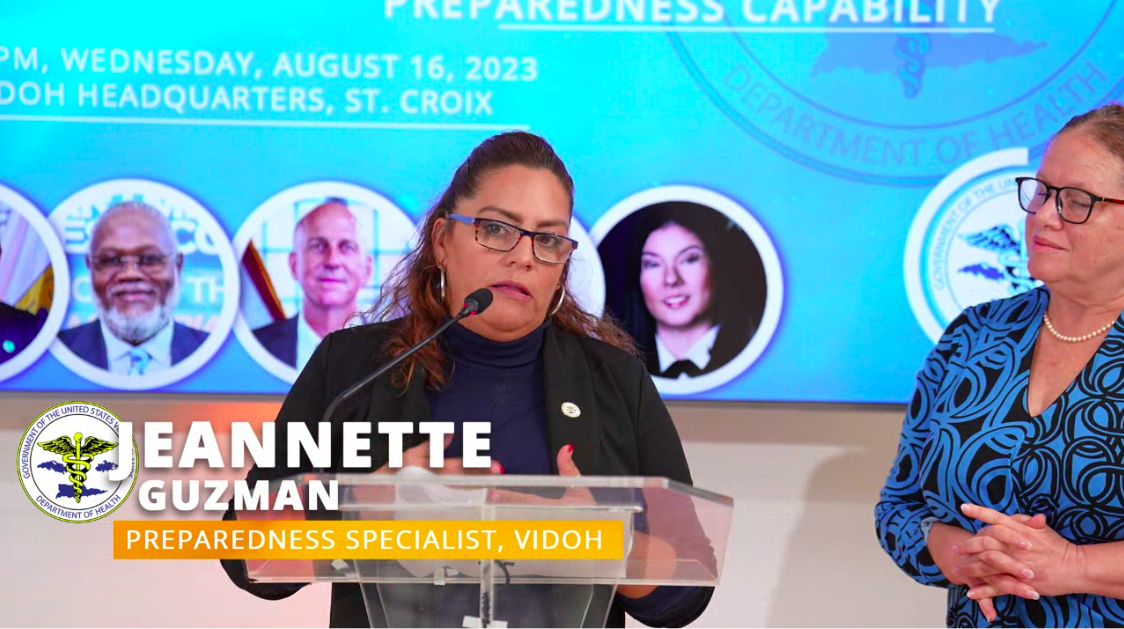Government officials discussed Wednesday a new tracking system that will follow patients being evacuated before or during a disaster from the time they leave the territory’s hospitals until they return.
V.I. Health Commissioner Justa Encarnacion, Daryl Jaschen, director of the V.I. Territorial Emergency Management Agency, Sandra Carpio, from Region 2. U.S. Department of Health and Human Services and Jeannette Guzman, the Department of Health’s evacuation lead – partners in the process – talked about their roles in operating the new Joint Patient Assessment Tracking System.

Encarnacion recognized that evacuating patients during the 2017 hurricanes was less than perfect. The new process will track every high-risk inpatient with a scannable bracelet from the minute they depart Juan Luis Hospital or Schneider Regional Medical Center until they return home after the disaster. Dialysis patients will also be evacuated and tracked – they will receive treatment the day before or the day they are moved off island.
“With JPATS, we can seamlessly share patient data to the provider to maintain continuum of care. Families can be promptly notified of the location and status of loved ones and identify needs in real time to direct resources,” Encarnacion said. “Today marks a pivotal advance of health emergency response in the V.I.”
The commissioner also pointed out that unless it is a major storm, patients will shelter locally since Schneider has been reinforced recently and Juan Luis moved into a new building.
Guzman explained to the Source that the hospitals’ daily census and the dialysis centers’ rosters will determine which patients will be evacuated at the time the government makes the call to move.

Patients considered “high risk” include the elderly, pregnant women, those in dialysis treatment and patients in the intensive care and neonatal units. If the patient is healthy enough, they will be discharged. Otherwise, a physician must approve the transfer. Patients will travel with a designated caregiver and won’t be allowed to return to the island without a place to live.
Jaschen said that “the aftermath (of the 2017 hurricanes) impacted all medical support”, so the V.I. Code was amended to minimize a repeat by streamlining off-island transfer. The law states that the federal government will assist the local government in tracking evacuees in the event of a category 3,4 or 5 hurricane.
According to the director, there are five systems in place but the most important is the Joint Patient Assessment Tracking System.
The only cost for the JPATS system is the training that will take place Aug. 17 on St. Croix. Staff from both hospitals, the Department of Human Services, VITEMA, FEMA and the U.S. Department of Human Services will learn the new web-based





